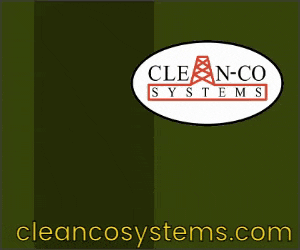Part 2 of CCJ ONsite’s coverage (access part 1 here) of the Air-Cooled Condenser Users Group’s 10th annual meeting (October 2018, Colorado Springs) by Consulting Editor Steve Stultz focuses on air in-leakage, which increases vacuum and contributes to a loss in thermal performance. Ingress of oxygen and carbon dioxide also can cause problems in the steam/water cycle and make it more difficult to achieve the degree of chemistry control required for optimal performance.
Bear in mind that a typical ACC may have 20,000 tubes, 40,000 welds, numerous valves, large ductwork, and plate walls—many locations for air leaks to occur and propagate.
Conco Services Corp’s Andrew Leavitt provided valuable perspective and contributed to the forum by describing practical methods and applications for tracer-gas leak detection.
“Sometimes,” he said, “you are looking for a leak less than the size of a dime in a surface area equivalent to three or four football fields.”
“Often you should just start at the ground and move up, eliminating areas,” he suggested. Leavitt showed examples of leakage at steam-jet air ejectors, jet isolation valves, hoggers, and other locations—including some under insulation. Also common are tube and duct weld leaks.
Leavitt then presented some troubling examples from new installations. In one case, installers “simply forgot a gasket” on a jet isolation valve.
An odyssey. Don Wright of Exelon Corp led participants through “A Vacuum Leak Odyssey,” focusing on the difficulties of accurate leak detection. His example was an 1100-MW 2 × 1 combined cycle commissioned in 2017. The ACC has 11 streets with 55 cells, four hoggers, two steam-jet air ejectors, and one air eductor to protect the vacuum pumps.
Problems occurred soon after commissioning, he said, with vacuum from 1 to 1.5 in. Hg above the backpressure design curve, dissolved oxygen running 60 to more than 100 ppb, hoggers operating continuously to maintain vacuum, more than 50 fans turning 24/7, and thermography clearly showing cold areas (entrained air) in many streets.
Following a walkdown and valve configuration checks, helium leak testing began.
There were no valve alignment issues. Minor leaks were found at a duct rupture disk and a drain pot. Significant leaks were found at hogger shaft seals. These issues were addressed, but again with no improved vacuum performance.
Then Hurricane Harvey hit the area, and the plant was shut down temporarily. After restart, vacuum and dissolved oxygen improved significantly, and ACC thermography showed good temperature distribution. There was a significant reduction in the number of fans running. Hogger use was still required to maintain vacuum, and the steam-jet air ejector still had no visible discharge.
By November, vacuum and oxygen returned to pre-Harvey levels. The steam-jet air ejector OEM identified stuck check valves. Vacuum improved but remained above design. Helium leak testing was scheduled for spring.
In April, major leaks were found in steam-ejector flanged joints, drain tank valve, and the bonnets of four drain valves off the condensate line to the deaerator. Minor leaks also were identified in the defleg section of two streets, LP-turbine rupture disk and gland seal, and exhaust-duct flange.
Operations have since improved, but leak detection will remain active. In Wright’s words, “Even after the fix, there can be room for improvement.” Some minor leaks remain, and dissolved oxygen (15-30 ppb) remains slightly elevated.
This odyssey continues with helium testing scheduled for 2019.
Not all plants are created equal. As-built errors can challenge an operating staff. Experience at
Doga Enerji’s 180-MW combined-cycle cogeneration plant on the outskirts of Istanbul, Turkey, illustrates the point. The plant features three GE-designed and Thomassen-built Frame 6 gas turbines, three HRSGs of European design, one GE/Thomassen steam turbine, air-cooled condensers, and related equipment. The site was commissioned in 2010 to supply both electricity and district heating.
A plant rep shared lessons learned that attendees could benefit from. The ACC at this plant today has three streets with five fans each. Air removal is by hogging (startup) and two main ejectors.
The speaker described the following ACC shortcomings:
-
- Original design had only two streets. A third was added after two years of operation to improve summer operations.
- The ACC intake area was blocked by containers which were removed in 2013.
- A neutralization pit under the ACC led to blade corrosion on one fan. However, the pit cannot be relocated and must remain open to cool plant waste water.
- The urban environment dictated conversion to low-noise fans.
- Safety guard material under the fans is weak wire mesh, making maintenance both difficult and dangerous.
- Dissolved-oxygen measurement is incorrect, influenced by oxygen in the makeup water. A separate sampling line is needed.
- The original ACC tube-cleaning systems were not properly designed by the plant’s maintenance team and are not safety-compliant.
Other issues faced in the first few years of operation included the following:
-
- Motor coupling abrasion.
- Oil leakage from seals.
- Foiling of strainer filters.
- Particles in the oil pumps under the gearboxes.
- Motor bearing breakage.
- Gear abrasion.
A panel discussion on air in-leakage followed. It encompassed measurement data points and testing locations and methods. Helium versus SF6 was reviewed, noting that the latter is both difficult to transport and prohibited in many locations.
During the exchange, Structural Integrity’s Barry Dooley, a member of the steering committee noted that the ACC Users Group is planning to publish guidelines on air in-leakage; its starting point will be a new IAPWS Technical Guidance Document currently in technical review. Dooley is the executive secretary of that global organization.
The goal of both documents will be specific guidance for detecting and addressing air in-leakage at the plant level. Ultimately, this information should make its way into project specifications and offer specific best practices for detection.









